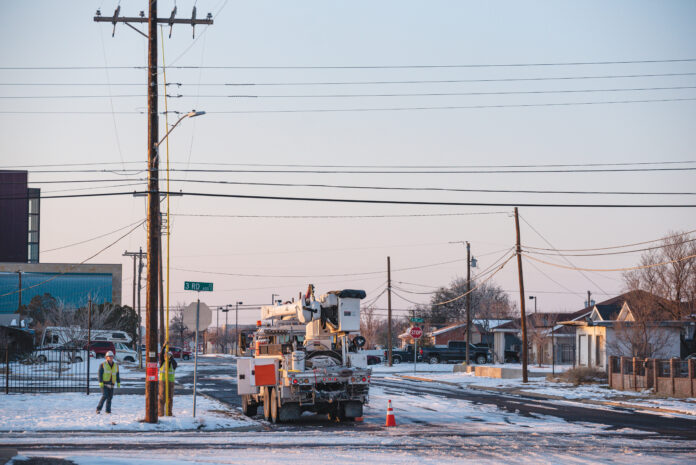
The gruesome memory of Winter Storm Uri, which turned the Permian Basin into the Arctic Tundra for almost a week in mid-February 2021, has a lot of people wondering if it could happen again and bracing for a possible repetition.
The Texas Legislature and the energy industry have made extensive preparations to avoid more of the power outages that killed 246 people in 77 counties and kept hundreds of thousands more Texans shivering in the dark, including tens of thousands in the Basin.
National Weather Service meteorologist Chris Stickney of Midland says it was a rare event that could happen again sometime, but it appears unlikely this winter.
Noting that the NWS’s 30-day forecast calls for conditions similar to those the region has seen lately to continue into mid-January, Stickney said the 2021 winter was what forecasters call a “La Nina” with the Jet Stream moving northward and the northern United States and Canada being wetter and colder than usual while an “El Nino” winter is characterized by more rain over the southern half of the country and drier weather in a few northern and Great Lakes states.
“It’s tough to figure out, but very broadly we’re looking to stay about normal for the rest of the winter, which doesn’t mean it can’t be cold,” Stickney said. “We will know more by the start of the year how the rest of the winter looks, but we are unlikely to end up with a White Christmas. It looks like a pretty typical El Nino.
“Uri brought a lot of cold air with it and that happens every once in a while,” the weatherman said. “It was a very uncommon record-breaking set-up with a low-pressure system and a lot of moisture and cold air.
“It was uncommon for it to happen in that way. The conditions came together just right to allow it.”
The NWS has a comprehensive analysis of Uri on its website under “weather.gov/maf, climate and past weather and significant events,” saying that by the night of Feb. 14, 2021, the low-pressure center had weakened as it exited the Mountain West while a secondary low developed in the Western Gulf of Mexico and allowed further precipitation across the eastern half of Texas.
“Strong high pressure nosed south into the western half of the state, leading to lighter winds and deep cold centering from Amarillo down into the Western Hill country and back to the Davis Mountains,” the Midland office of the weather service says. “By the morning of the 15th temperatures were below zero for about 30 percent of the state and over 75 percent of the state was below 20 degrees.
“The depths of warm and cold air aloft to the surface play a pivotal role in precipitation during winter weather. As the air aloft gets colder with already below freezing air at the surface, any liquid turns to all frozen and eventually all snow.”
The NWS says the only comparable magnitude of Arctic cold in Texas was in 1962 and 1983.



